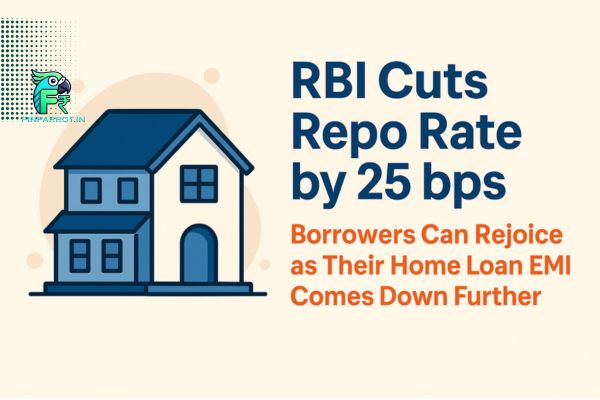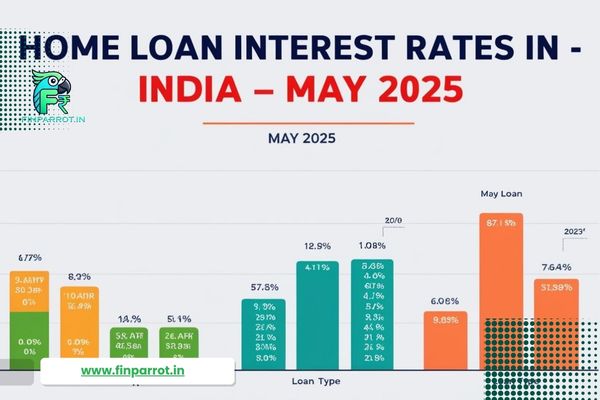Getting a loan application approved isn’t always easy. Many applicants face loan rejection for a variety of reasons—often without a clear understanding of why it happens. If your online loan application has been declined recently, you’re not alone. Banks, NBFCs, and digital loan app lenders follow strict approval criteria, and even a minor issue in your profile can lead to rejection. The good news is that by addressing these issues, you can significantly improve your chances of approval next time. In this post, Loan Rejection Reasons and Best Tips for Approval, we’ll explore the common causes of rejection and share effective strategies to help you secure the right loan that meets your financial needs.
Common Loan Rejection Reasons
- Low CIBIL Score (Below 650)
Your CIBIL score—a key figure from the Credit Information Bureau (India) Limited—is one of the first things lenders examine. A score below 650 signals high risk and makes banks hesitant to approve your loan application. Late payments, high credit utilization, and past defaults can drag down your score significantly. Lenders typically look for scores above 750 as ideal for approval; scores between 650-750 might be acceptable but could require additional verification, while anything below 650 often leads to outright rejection. Maintaining a clean credit history is essential for future loan success. - High FOIR (Fixed Obligation to Income Ratio)
FOIR measures the percentage of your monthly income that is allocated toward fixed obligations such as EMIs, rent, and other recurring debts. Lenders generally prefer an FOIR below 40%, which indicates that you have enough disposable income to handle additional repayments. If your FOIR exceeds 50%, your chances of rejection increase dramatically because lenders see this as a sign that your finances are already overburdened. Reducing your FOIR by lowering existing liabilities or increasing your income can greatly boost your approval odds. - Unstable Income or No Salary Proof
Lenders require clear evidence of stable income to ensure that you can repay an instant loan. If you have irregular income or fail to provide adequate salary proof, your loan application might be declined. Salaried employees with consistent income streams are generally favored, whereas self-employed individuals must present detailed Income Tax Returns (ITR) and business proofs. Freelancers or those with sporadic earnings often encounter difficulties because inconsistent income raises red flags for lenders. Proper documentation is key to overcoming this hurdle. - Multiple Loan Applications (Hard Inquiries)
Every time you apply for a loan application, a hard inquiry is generated on your credit report. Submitting multiple applications in a short span can significantly lower your credit score. Lenders view frequent hard inquiries as a sign of financial desperation, which suggests instability. Applying for several loans at once can lead to repeated rejections, making your credit profile look riskier over time. It is best to space out your applications so that your credit report reflects a more stable financial behavior. - Existing Loan Overload (High Debt-to-Income Ratio)
If you are already managing multiple loans, your debt-to-income ratio (DTI) might be too high for lenders to take on additional risk. A high DTI means a large portion of your income is already committed to repaying existing debts, which raises concerns about your ability to manage another loan application. Generally, a DTI above 40-50% is a major red flag. Lenders fear that an overburdened borrower may default on new loans, so reducing your overall debt before applying can improve your chances considerably. - Mismatched Eligibility Criteria (Age, Employment Type, etc.)
Every lender has specific eligibility criteria, which may include factors such as age, employment type, and even geographic location. If your profile does not match these criteria, your loan application can be rejected. For example, applicants who are too young or too old might not meet the lender’s requirements, and self-employed individuals may be considered higher risk compared to salaried employees. Additionally, some lenders—especially the best personal loan apps in India—might impose location-based restrictions. It is important to review these eligibility conditions before applying to ensure you meet the requirements. - Errors in Credit Report or Loan History Issues
Sometimes, the reason behind loan rejection is not your financial behavior at all but errors in your credit report. Inaccurate details, unclosed loans, or even signs of fraudulent activities can tarnish your creditworthiness. These mistakes can lead to a misinterpretation of your financial history, resulting in an undeserved rejection. Regularly checking your credit report, disputing any discrepancies with CIBIL, and ensuring that all past loans are accurately updated can help prevent these issues and improve your overall profile.
How to Increase Your Loan Approval Chances
- Improving CIBIL Score Quickly
A low CIBIL score is a frequent cause of loan rejection, but there are several proactive steps you can take to improve it. Make sure you pay your credit card bills and EMIs on time. Reducing your credit utilization to below 30% is also beneficial. Avoid closing old credit accounts since a long-standing credit history can work in your favor. Moreover, it is crucial to regularly monitor your credit report and dispute any errors you find. These measures collectively help boost your score and, in turn, enhance your chances of securing a new loan. - Reducing FOIR Before Applying
High FOIR can seriously hamper your ability to get approved for a loan. To lower your FOIR, focus on reducing your fixed monthly obligations. This might involve paying off small debts or consolidating high-interest loans into one with a lower EMI. Additionally, consider exploring avenues to increase your income, such as a side hustle or part-time work. Improving your income-to-obligation ratio not only strengthens your financial profile but also presents you as a less risky borrower to lenders. - Choosing the Right Lender Based on Your Profile
Not all lenders use the same criteria to evaluate loan applications. While some banks have very strict approval processes, other options like the best loan app in India or fintech lenders might offer more flexible terms. Banks often provide lower interest rates but may reject your application if your profile doesn’t perfectly align with their criteria. NBFCs, on the other hand, tend to be more lenient but might charge higher rates. Top loan apps often offer quick approvals, albeit with processing fees. Researching your options and choosing the right lender can make a significant difference in your loan approval chances. - Applying for Pre-Approved Loan Offers
One smart way to increase your odds is by applying for pre-approved loan offers. When a lender pre-approves your application, it means they have already reviewed your profile and determined you are eligible for a particular loan. Pre-approved offers typically involve faster processing, minimal documentation, and lower chances of multiple hard inquiries on your credit report. This streamlined process not only saves time but also improves the likelihood of securing the right loan with favorable terms. - Building a Strong Financial Profile
A robust financial profile is one of the best ways to boost your loan approval chances. This means maintaining a stable job with a regular income, keeping all your financial records—such as bank statements and ITRs—in order, and avoiding frequent job changes that could signal instability to lenders. A strong financial history demonstrates reliability and responsibility, which are qualities that lenders highly value. By working on all aspects of your financial health, you build a foundation that makes you a more attractive candidate for any loan. - Waiting Before Reapplying After Rejection
If your loan application is rejected, it’s important not to rush into another application immediately. Take time—ideally 3-6 months—to address the issues that led to the rejection. Use this waiting period to improve your CIBIL score, lower your FOIR, and stabilize your income. Rushing back into the application process without making these improvements can result in repeated rejections, further damaging your credit profile. Only reapply when you’re confident that you have corrected the underlying issues. - Avoid Predatory Lending
In the quest for quick cash, many borrowers fall prey to predatory lenders who offer extremely high-interest, short-term loans. These lenders often trap you in a cycle of debt that is difficult to escape. Always be cautious and thoroughly research any lender before submitting a loan application. Choose a trusted loan app that offers transparent terms and conditions. Avoiding predatory lending practices not only protects your financial well-being but also ensures that you are working with reputable institutions.
Additional Tips for a Successful Loan Application
- Maintain Consistent Financial Records: Keeping your financial documents updated and organized is crucial. Ensure that all your bank statements, tax returns, and employment documents are accurate and readily available. This level of transparency builds trust with lenders.
- Monitor Your Credit Regularly: Regular credit monitoring allows you to catch discrepancies early. By staying on top of your credit report, you can address any issues before they have a chance to negatively impact your loan application.
- Avoid Unnecessary Credit Inquiries: Each credit inquiry can lower your score slightly, so it’s best to avoid applying for multiple loans or credit cards in a short period. Planning your loan application carefully is key.
- Seek Professional Advice: If you’re unsure about any aspect of your financial profile or the loan process, consider consulting a financial advisor or credit counselor. Professional guidance can provide personalized insights tailored to your situation.
FAQs
Which matters more for loan approval credit score or income?
A strong credit score is critical, but a stable income also plays a key role—find out more here.
What types of loan apps should I consider for the best approval chances?
Explore a variety of loan apps from personal to instant options to match your needs—learn more here.
Conclusion
Loan rejection isn’t the end of the road. By understanding the common loan rejection reasons and applying these best tips for approval, you can take control of your financial future. Whether it’s working to improve your CIBIL score, managing your FOIR, or building a strong financial profile, every small change can lead to significant improvements in your loan eligibility. If you’re still uncertain about your loan options, consulting a financial expert can help you devise a personalized strategy for success.
Get Expert Help for a Hassle-Free Loan Application
Instead of applying for a loan application directly and risking multiple hard inquiries that could further lower your credit score, get expert DSA (CASHBAZAAR) support. Our specialists analyze your profile and apply for the right personal loan on your behalf, ensuring better chances of approval without multiple CIBIL score hits.















